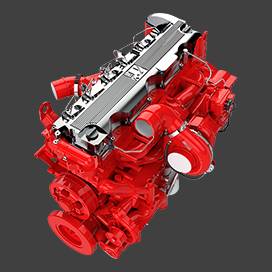Nov . 27, 2024 04:59 Back to list
Understanding the Mechanics and Functionality of Brake Drum Systems for Vehicles
Understanding the Brake Drum System An Essential Component of Automobiles
The brake drum system is a critical component of a vehicle's braking mechanism, functioning effectively to ensure safety and control while driving. Understanding its structure, operation, advantages, and drawbacks can help drivers appreciate the importance of this system in automotive engineering.
Structure of the Brake Drum System
At its core, the brake drum system consists of several components, primarily the brake drum, brake shoes, wheel cylinder, and various springs and hardware. The brake drum is a cylindrical component attached to the wheel hub. When the driver presses the brake pedal, hydraulic fluid from the master cylinder flows into the wheel cylinder, forcing the brake shoes outward against the inner surface of the brake drum. This action creates friction, which slows down or stops the wheel’s rotation.
Operation of the Brake Drum System
The operation of a brake drum system is primarily based on the principles of friction and hydraulics. When the brake pedal is pressed, it activates the master cylinder, which generates hydraulic pressure. This pressure is transmitted through brake lines to the wheel cylinder located inside the brake assembly. The mechanical advantage created by the hydraulic force translates into the movement of the brake shoes.
Once the brake shoes come into contact with the brake drum, the friction material on the shoes grips the drum, thereby decelerating the wheel. The greater the pressure exerted by the wheel cylinder, the more substantial the contact surface and the friction created. Once the pressure on the brake pedal is released, springs pull the brake shoes back to their original position, allowing the wheels to rotate freely.
Advantages of Brake Drum Systems
brake drum system

One of the primary advantages of brake drum systems is their ability to provide effective stopping power in various driving conditions. They are generally simpler in design and can be less expensive to manufacture compared to disc brake systems. Brake drums tend to have a self-expanding feature, which means that they can increase their effectiveness automatically as the shoes wear down over time.
Moreover, drum brakes are excellent for applications where space and weight are a consideration, making them a popular choice for smaller vehicles and certain trucks. Their closed design also protects the internal components from road debris and weather conditions, prolonging the life of the braking system.
Drawbacks of Brake Drum Systems
Despite their advantages, brake drum systems are not without disadvantages. One significant limitation is their tendency to overheat. During heavy braking, particularly on steep inclines or in prolonged braking situations, the heat generated can cause the braking performance to fade, a phenomenon known as brake fade. This reduced performance can compromise safety.
Additionally, drum brakes tend to be less efficient in dissipating heat compared to disc brakes, which can result in uneven wear and necessitate more frequent maintenance. They also often take longer to cool down after heavy use, which can lead to an increased risk of brake failure if not properly managed.
Conclusion
The brake drum system plays a vital role in vehicle safety and performance. It operates on fundamental principles of friction and hydraulics, providing effective braking when necessary. While it possesses several advantages, such as simplicity and cost-effectiveness, awareness of its limitations is equally essential for drivers. Proper maintenance and understanding of the system can help ensure that vehicles are safe and responsive on the road. As automotive technology progresses, the integration and evolution of various braking technologies, including drums and discs, continue to enhance the safety and efficiency of modern vehicles.
-
Scania Brake Drums: OEM Quality for Optimal Safety & Durability
NewsAug.16,2025
-
R.V.I: Advanced Remote Visual Inspection for Precision
NewsAug.15,2025
-
Discover HYUNDA: Innovative Vehicles, Equipment & Solutions
NewsAug.14,2025
-
R.V.I: Unlock Advanced Insights & Real-time Performance
NewsAug.13,2025
-
Kamaz Brake Drum: Durable & Reliable for Heavy Duty Trucks
NewsAug.12,2025
-
Heavy Duty Iveco Brake Drum - Premium Quality & Safety
NewsAug.11,2025
